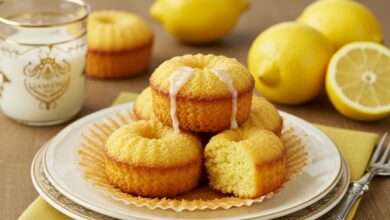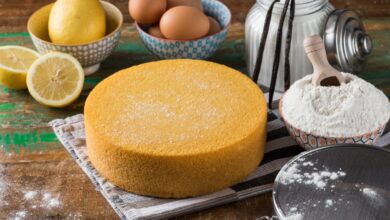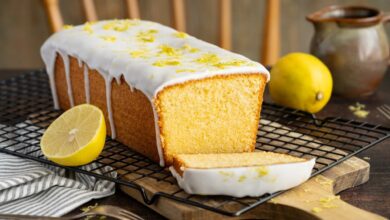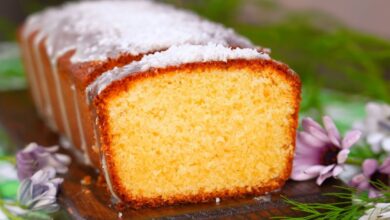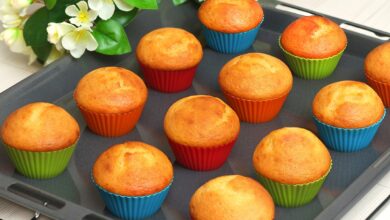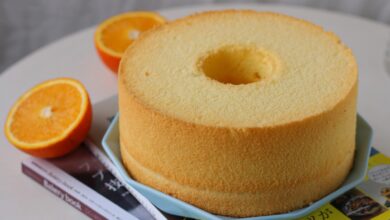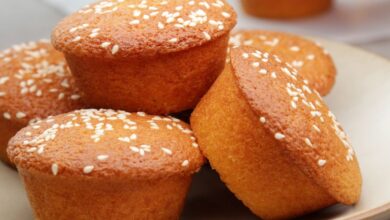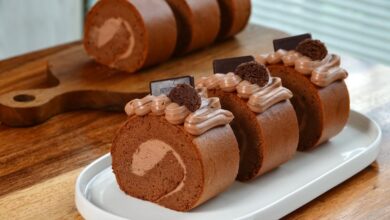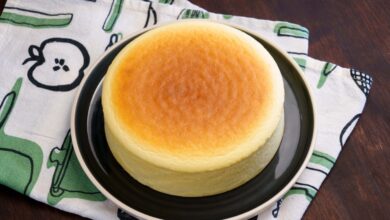Fluffy Vanilla Sponge Cake
There’s a reason the vanilla sponge cake is a staple in bakeries and kitchens worldwide. Known for its delicate crumb and ultra-light texture, this cake is a versatile base that pairs beautifully with various fillings, frostings, and toppings.
Whether it’s layered with whipped cream and fresh fruit or adorned with a rich buttercream, a well-made sponge cake is timeless. In this guide, we’ll walk you through each step, ensuring your sponge cake is perfectly fluffy, tender, and flavorful every time. Using the right ingredients is crucial to getting a fluffy, moist vanilla sponge cake.
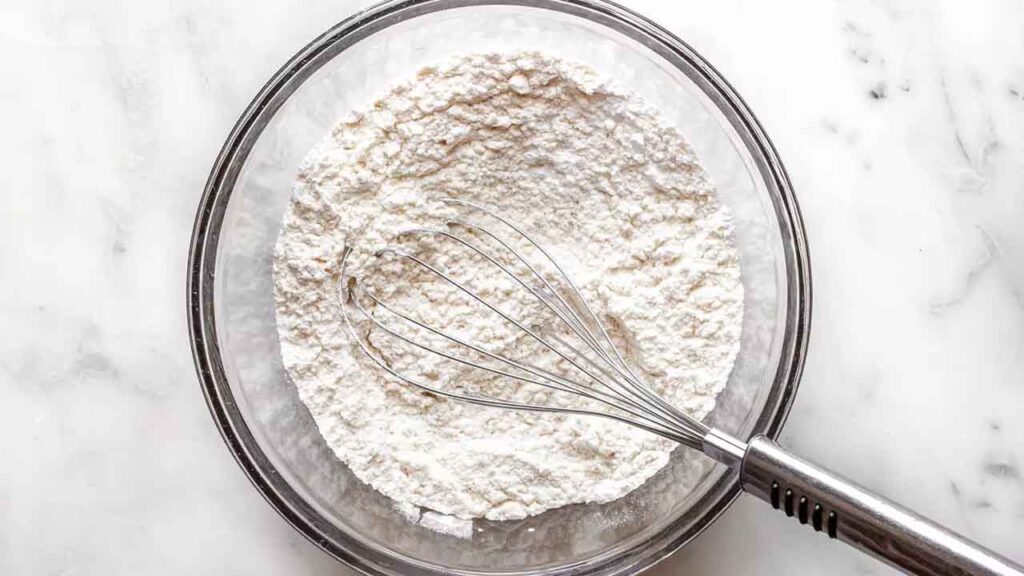
Each ingredient plays a specific role in texture, taste, and structure, so be sure to measure accurately and follow each step. Preheat your oven to 350°F (175°C). Baking at the right temperature is essential to prevent over-baking or under-baking, both of which can affect the cake’s texture.
Grease a cake pan with a thin layer of butter or non-stick spray. Line the bottom with a circle of parchment paper for easy removal, then lightly dust the sides with flour to prevent sticking. Tap out excess flour to avoid clumping. Combine the all-purpose flour, baking powder, and salt in a medium bowl.
Sift this mixture twice to aerate it, ensuring a smoother and lighter batter. Double-sifting is particularly effective for a soft crumb, as it breaks up any lumps and distributes the baking powder evenly. In a large mixing bowl, crack the 4 eggs. Ensure they are at room temperature, as this allows them to whip to a greater volume.
Add the granulated sugar and, using an electric mixer on high speed, beat for 5-7 minutes. You want a thick, pale mixture that has nearly tripled in volume and falls in ribbons when lifted from the whisk. This technique incorporates air into the eggs, a key step for a fluffy, sponge-like texture.
Test the ribbon stage: Lift the beaters; if the batter falls back into thick ribbons that slowly dissolve into the mixture, you’re ready for the next step. In a small saucepan, gently heat the milk and unsalted butter over medium-low heat. Stir until the butter is fully melted, then remove from the heat and let cool slightly. The milk should be warm but not scalding, as high temperatures can scramble the eggs when added.
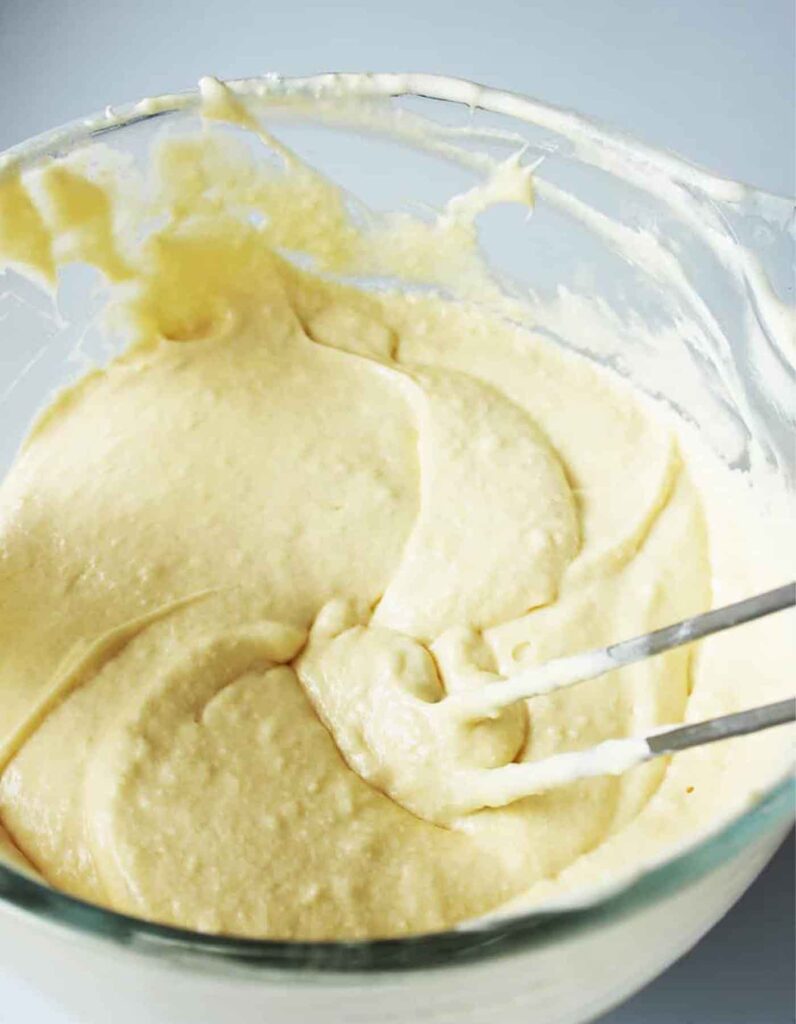
Warming the milk and butter helps create a finer crumb in the finished cake. Sift the flour mixture one last time directly over the whipped eggs and sugar. Do this in three batches, folding gently with a rubber spatula after each addition. Use a light hand and slow movements to incorporate the flour without deflating the aerated egg mixture.
The folding process should preserve the bubbles and ensure a fluffy cake. Pour the slightly cooled milk and butter mixture down the side of the bowl to avoid deflating the batter. Add the vanilla extract for flavour. Fold the mixture gently, making sure everything is fully combined. The batter should be smooth, airy, and slightly glossy.
Avoid over-mixing, as this can cause the cake to turn dense. Pour the batter into the prepared cake pan, using a spatula to smooth the top for an even rise. The batter should sit about two-thirds full in the pan to allow room for expansion. Place the pan on the middle rack of your preheated oven.
Bake for 30-35 minutes, or until the cake is golden and a toothpick inserted into the centre comes out clean. If the cake is browning too quickly, loosely cover the top with foil during the last 10 minutes of baking to prevent burning. Remove the cake from the oven and let it cool in the pan for 10 minutes.
Run a knife around the edges to loosen it, then carefully invert the cake onto a wire rack. Peel off the parchment paper, then flip the cake right side up to cool completely. Avoid moving the cake too much while warm, as it’s delicate and can crack.
You may also like:
Tips for Success;
Room Temperature Ingredients: Ensuring all ingredients are at room temperature allows for easier mixing and a smoother, airier batter.
Sifting Flour: Don’t skip the sifting steps—this is key for a lump-free, light batter that rises evenly.
Don’t Over-Bake: Keep an eye on the cake towards the end of baking. Over-baking dries out the cake, so test for doneness promptly around 30 minutes.
Fold, Don’t Stir: Gentle folding traps air bubbles, keeping the sponge light and fluffy.
Serving Suggestions;
This vanilla sponge cake shines with a variety of toppings and fillings. Here are some ideas to elevate your cake:
Classic Fresh Cream and Berries: Spread a layer of lightly sweetened whipped cream over the cake and garnish with fresh strawberries, blueberries, or raspberries.
Buttercream Frosting: A smooth, sweet buttercream pairs well with the cake’s delicate crumb. You can flavour it with vanilla, lemon, or even cocoa for variety.
Fruit Compote or Jam: Spread a thin layer of fruit jam, such as strawberry or raspberry, between layers for a delightful contrast in flavour.
Simple Powdered Sugar Dusting: For an understated finish, sift powdered sugar over the top of the cake.
A homemade vanilla sponge cake is a true baking classic, perfect for both beginners and experienced bakers looking to master a versatile recipe. With the right techniques and ingredients, this fluffy, tender cake is sure to become a family favourite, ideal for special occasions or simple gatherings.
Ingredients;
- 1 ½ cups (180g) all-purpose flour, sifted twice for lightness
- 1 ½ tsp baking powder
- ¼ tsp salt
Wet Ingredients;
- 4 large eggs, at room temperature
- 1 cup (200g) granulated sugar
- ½ cup (120ml) whole milk, at room temperature
- ¼ cup (60g) unsalted butter
- 1 tbsp pure vanilla extract
